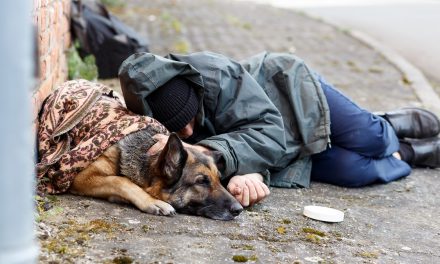HIV is no longer a death sentence. With medications such as pre-exposure prophylaxis (PrEP) and antiretroviral therapy (ART), new HIV infections can be prevented and the virus can be suppressed in HIV-positive individuals allowing them to live longer, healthier lives.
But decades-old stigma and misinformation prevent many from accessing the care they need. Poor sex education and health care access barriers across the U.S. only deepen this stigma and contribute to high infection rates.
The Effects of Misinformation and Lack of Education
According to “Investing in the Health and Well-Being of Young Adults,” serious illnesses and diseases, such as HIV, are more easily managed or avoided altogether when young adults engage in early wellness screenings and practices. To reduce the likelihood of contracting HIV among at-risk young adults, it’s necessary to implement screenings and education about HIV stigma, safe sex, and preventive medications prior to the age they begin engaging in sexual activity and other high-risk behaviors.
“Well, there’s a direct correlation with a lack of sexual health education and HIV in young folks between the ages of 13 and 24,” said J. Maurice McCants-Pearsall, director of HIV and health equity at Human Rights Campaign. “That’s undeniable.”
Although from 2015 to 2019, new infections among young gay and bisexual men ages 13-24 dropped 33 percent overall, young gay and bisexual men accounted for 83 percent of new diagnoses in the age group. Black and Latinx communities continue to be disproportionately affected with young Black and Latinx gay and bisexual men making up 42 percent of new diagnoses among young men.
HIV’s hard-hitting impact on Black and Latinx communities is also due to social determinants of health that aren’t being addressed for communities of color. “It’s not just enough to give someone a blue magical pill and say, ‘Oh, this is going to prevent you from contracting HIV,’” McCants-Pearsall said. “No, we have to have comprehensive health care for folks, then address all their needs from mental health to behavioral health services, to increased access to medical treatment and/or prevention services … equal access to educational, employment opportunities, housing.”
Nearly a fifth of LGBTQ+ young adults say they have avoided seeking medical care out of fear of discrimination, according to a poll conducted by Harvard University. Avoiding medical care can lead to serious negative health effects, including not being aware of one’s HIV status. In a recent forum, “Health in the LGBTQ Community: Improving Care and Confronting Discrimination,” hosted by Harvard T.H. Chan School of Public Health and NPR, experts expanded on the effects of discrimination in the health care industry.
“There’s a ton of research, including by my colleagues here at Harvard, showing that experiencing discrimination is associated with a whole range of negative health outcomes,” said Logan Casey, research associate at the Harvard Opinion Research Program. “So if you’re experiencing this discrimination on such a widespread scale and it’s having all these negative health impacts and then on top of that you’re not going to a doctor …that is going to compound the effects of discrimination.”
Addressing stigma in the health care industry for LGBTQ+ and people of color (POC) is the first step in making preventive care more accessible to these communities. “The biggest challenge is that the health care system is woefully unprepared to take appropriate care of LGBTQ people,” said Kenneth Mayer, co-chair and medical research director of the Fenway Institute. “It’s a dawning idea that needs to gain traction, that there’s also a whole field of sexual-gender minority health that providers need to have an understanding of.”
HIV Remains A Problem in Rural Missouri
Missouri is one of seven states deemed to have a “substantial rural burden” due to health care access barriers that result in lower rates of HIV testing and PrEP. There are 13 rural counties in Missouri, historically designated as health professional shortage areas, that have high infection rates. Some individuals in these areas drive four hours or more, round-trip, for a clinic visit. Higher rates of poverty, less access to transportation, and no health insurance also contribute to increased rates of HIV in rural areas. These significant access barriers often lead to individuals skipping preventive care altogether or getting care too late.
Rural areas also often have higher levels of injection drug use driven by the opioid epidemic that can lead to increased rates of HIV infection caused by needle sharing or other unsafe drug use practices, coupled with a lack of drug rehabilitation or syringe service programs that reduce HIV infection risks.
Research suggests that the majority of new infections are caused by people unaware of their HIV status, and The National Center for HIV/AIDS, Viral Hepatitis, STD and TB Prevention reports that 14 percent of Missourians are unaware they have HIV. HIV testing and early diagnosis are critical in identifying infected individuals who are not aware of their positive status and connecting them to treatment and prevention services.
According to a data study by the Missouri Department of Health, of the 13,554 persons living with HIV in Missouri in 2020, more than half of those persons (8,397) contracted the virus through male-to-male (MTM) sexual contact, but only 37 percent of those men retained care long enough to become virally suppressed through ART. Missouri data is consistent with national trends showing Black and Latinx making up almost half (6,870) of those HIV positive in the state. Of those, only 32 percent of Blacks and 31 percent of Latinx retained care long enough to become virally suppressed.
Using PrEP and ART for HIV Prevention
Taking HIV medications, like PrEP and ART, as prescribed reduces the risk of contracting or spreading HIV through sex by about 99 percent. However, among persons tested for HIV infection in 2019, only 37 percent were aware of PrEP even though 59 percent of those tested were determined to be eligible for a PrEP referral. Previously, PrEP was only recommended for gay and bisexual men and other high-risk individuals, such as sex workers and injection drug users, but since 2015 guidelines have expanded to include other high-risk women and youth.
According to the CDC, PrEP is recommended for those who:
- Have had anal or vaginal sex in the past 6 months
- Have a sexual partner with HIV (especially if the partner has an unknown or detectable viral load)
- Have not consistently used a condom
- Have been diagnosed with an STD in the past 6 months
- Inject drugs and share needles, syringes, or other equipment to inject drugs
Some experts refer to PrEP as a ‘game changer’ in the fight against HIV. “The argument is over about PrEP. If you take the drug, it works, not only in a clinical trial but in the field,” said Anthony Fauci, chief medical advisor to President Joe Biden.
PrEP drug costs are lower than HIV treatment costs, both per dose and overall duration of use. PrEP is prescribed for consistent use, but only when someone is at an increased risk of HIV. On the other hand, if an individual is HIV positive they will require ART for the remainder of their life to stay healthy.
A recent report released by the Health Resources and Services Administration (HRSA) shows that HIV-positive individuals receiving medical care through the Ryan White HIV/AIDS Program (RWHAP) were virally suppressed at a record level of 89.4 percent in 2020 through ART treatment. More than 550,000 HIV-positive people received service through the program, which is more than half of those diagnosed with HIV in the United States.
Viral suppression is a critical component in ending the HIV epidemic because people with HIV who take ART as prescribed and reach and maintain an undetectable viral load have effectively no risk of transmitting the virus to an HIV-negative partner.
ART has also made it possible for women with HIV to give birth to babies who are free of HIV. Taking HIV medicine as prescribed throughout pregnancy, labor, and delivery and giving HIV medicine to your baby for 4 to 6 weeks after birth, decreases the baby’s risk of getting HIV to 1 percent or less.
Increased use of PrEP and ART medications can help the U.S. reach its national goal of 80 percent HIV viral suppression, while significantly decreasing new infections in at-risk populations.
Navigating HIV During the COVID-19 Pandemic
The COVID-19 pandemic has threatened years of progress made in the fight against the HIV epidemic. Stresses on the health care system from the pandemic have only further increased access gaps to preventive HIV care. At the same time, it has pulled back the veil and exposed how deep health care access barriers and health care inequities run in the U.S.
Black and Latinx communities have been historically hit hard by HIV and COVID-19, seeing disproportionate rates of infection. These communities also face many health care inequities making treatment options and preventive care scarce to begin with.
Quarantine, social distancing, and other containment measures have reduced access to routine HIV testing. Testing is the crucial first step to getting individuals into the HIV care continuum. Although self-testing kits are available, access to these kits can be scarce – especially in rural areas that already face access barriers.
Timely linkage to HIV care has also been hindered during the COVID-19 pandemic. People living with HIV who should have initiated ART have been deterred or delayed because many hospitals are full and busy treating patients with COVID-19. With HIV-positive individuals being at a higher risk of serious illness from COVID-19, maintaining the continuum of care during the pandemic is crucial.
Access HIV Testing and Medication in Missouri
- Bureau of HIV, STD, and Hepatitis In Missouri Hotline: (573) 751-6439
- Missouri Department of Health and Senior Services
Most insurance plans and Medicaid programs cover PrEP. Missouri recently expanded Medicaid and an additional 275,000 Missourians qualify for free or low-cost health insurance through the program called MO HealthNet. Find out if you qualify and enroll.
There are also other programs that provide PrEP for free or at a reduced cost:
- Ready, Set, PrEP – makes PrEP medication available at no cost to those who qualify.
- Co-pay assistance programs – help lower the costs of PrEP medications. Income is not a factor in eligibility.
- Some states have PrEP assistance programs – some cover medication, some cover clinical visits and lab costs, and some cover both.
Help spread the word about PrEP and ART with our free-to-use social media toolkit.








